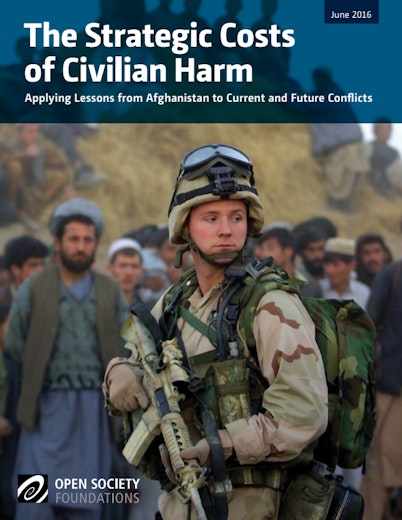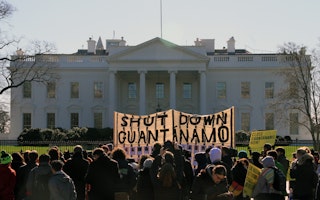The Enduring Toll of Civilian Harm
By Rachel Reid
The U.S. military was too slow to realize the full cost of “civilian harm”—the military’s term for killing innocent civilians and causing political, social, and economic disruption—in its war in Afghanistan. By the end of 2008, the United States and its allies caused nearly 40 percent of all civilian fatalities, according to UN data. Afghans judged them harshly: they expected the Taliban to be brutal, but international militaries, with their technology and “precision” weapons, should not have been doing such damage.
It was not just civilian casualties that were losing the war, but the broader pattern of harm as well: from alliances with abusive Afghan militias, whose power became entrenched with American backing, to weak intelligence that led to U.S. troops being used as unwitting assassins in inter-Afghan rivalries.
In response, General Stanley A. McChrystal and his successors eventually launched a series of reforms to stop some of the unnecessary harm. The changes included new operational guidance, leadership, learning, and analysis. The result was a significant reduction in civilian casualties by international forces through 2013, even while their troop numbers and operational tempo rose.
Today, the Open Society Foundations and Christopher Kolenda, a former U.S. Army officer and advisor to McChrystal, are releasing a report examining the strategic costs of civilian harm and lessons from the war in Afghanistan during that period of change. The report is based on interviews with more than 60 experts, including current and former senior U.S. and Afghan officials, as well as UN officials and civil society experts.
One of the key findings is that civilian harm had not just a moral and legal cost but also enormous strategic consequences. It contributed significantly to the growth of the Taliban and undermined the war effort by weakening the legitimacy of the U.S. mission and the Afghan government, while also straining U.S.–Afghan relations. Casualties inflicted by partners using American weapons, equipment, training, and support likewise undermined U.S. credibility and strategic interests.
The report also rejects criticism that civilian protection put U.S. forces at great risk, which is not supported by any empirical evidence.
While the United States has absorbed some of these lessons, institutionalization has been limited. In the U.S. military, there is still no enduring policy on civilian harm. The military could also create standing civilian protection units modeled after the Civilian Casualty Track Cell of the International Security Assistance Force, which would monitor and analyze the scale and impact of civilian harm.
In other countries, civilian casualties caused by U.S. operations and by partner forces pose strategic risks analogous to those confronted by the United States in Afghanistan. And yet preliminary efforts to track these casualties in Syria and Iraq, while welcome, are dramatically undercounting. In Yemen and Pakistan, transparency about civilian harm is lacking entirely, though the administration did recently promise to release its casualty data.
Without consistent leadership attention, education, resources, and training, the hard-learned lessons from Afghanistan could be lost relatively rapidly. Just look at the terrible bombing of the Médecins Sans Frontières hospital in Kunduz last year. Moreover, the United States is engaged in training militaries all over the world; it could save countless lives by improving their capabilities and leadership to protect civilians.
Reforms in Afghanistan came too late to reverse lasting damage. But the U.S. military might avert similar strategic loss in future conflicts by adopting the recommendations in the report. It’s already shown once that it is possible.
Until March 2019, Rachel Reid was the regional advocacy manager for Middle East, North Africa, and Southwest Asia.


